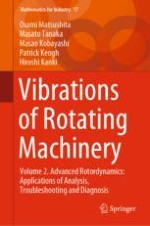Building on the previous volume “Vibrations of Rotating Machinery - Volume 1. Basic Rotordynamics: Introduction to Practical Vibration Analysis,” this book is intended for all practical designers and maintenance experts who are responsible for the reliable manufacturing and operation of rotating machinery. It opens with the dynamics of oil film bearings and their influences on unbalance, vibration resonance and the stability of rotor whirl motion. Subsequently, the book introduces readers to vibration diagnosis techniques for traditional ball bearings and active vibration control from magnetic bearings. Case studies on vibration problems and troubleshooting in industrial turbo machines are then presented and explained, showing rotor designers how to eliminate instability and modify resonance characteristics. Torsional vibration and other coupled vibration phenomena are discussed, and vibration measurement techniques and related signal processing procedures for vibration diagnosis are provided. Our latest three topics are included, covering: (a) the importance of the modeling order reduction (MOR) technique; (b) the approximate evaluation for oil-wheel/whip instability; and (c) a systematic method for shafting-blading coupled vibration analyses. In closing, a 100-question trial test is supplied as an example of the certification of vibration experts based on the ISO standard.
